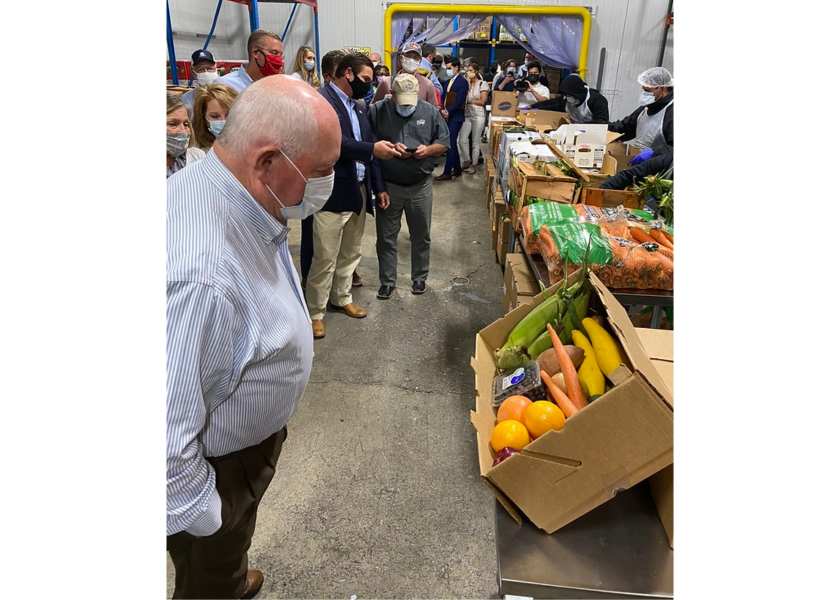Food banks left wanting for produce boxes from USDA

Where have all the produce boxes gone?
According to numbers collected by the International Fresh Produce Association, from June 2021 through July 2022, USDA has purchased or solicited 3.86 million fresh produce boxes for The Emergency Food Assistance Program, or TEFAP, spending a total of $28.2 million.
That level of support for feeding programs is much less than the government supplied during the first year of the COVID-19 pandemic.
The first two rounds of the USDA’s Farmers to Families Food Box Program sourced 54.7 million boxes of produce in the period from about May 2020 to May 2021. Combination boxes, including produce, dairy and meat products, accounted for another 88 million boxes over the span of the program. With more than $5 billion spent on food boxes, the program ended May 31, 2021, the USDA said on its website.
While the post-pandemic scale of the USDA Farmers to Families Food Box Program was over, the Biden administration indicated at the time that fresh produce boxes would be available through TEFAP.
Some fresh produce boxes are moving with the TEFAP program, but the volume is not nearly what it had been with the Farmers to Families Food Box Program during the height of the pandemic, said Lisa Hamler-Fugitt, executive director of the Ohio Association of Food Banks, Columbus.
“I just don't think that there are a lot of growers or suppliers that are bidding on that [TEFAP] program right now,” she said, noting that the contracts often ask for deliveries across multiple states.
Higher transportation costs and truck shortages may create headaches for suppliers who would bid on those contracts, Hamler-Fugitt speculated.
Although the time and circumstances are different than they were immediately after the pandemic started, Mollie Van Lieu, IFPA's vice president of nutrition and health, said the differences in the volume of produce boxes sourced by the USDA in the past year are striking.
There are long-term ambitions by the Biden administration that would increase procurement of produce for food banks and emergency feeding programs.
Van Lieu noted that both nonprofit food assistance representatives and fresh produce industry leaders have met with Stacy Dean, deputy undersecretary for USDA’s Food, Nutrition and Consumer Services, about the need for increased emergency food assistance.
A bill supported by IFPA from Rep. Rosa DeLauro, D-Conn., called the Fresh Produce Procurement Reform Act, aims to increase and improve the USDA’s procurement of fresh fruits and vegetables, Van Lieu said.
The USDA’s new Local Food Purchase Assistance Cooperative Agreement Program will award up to $400 million through noncompetitive cooperative agreements with state and tribal governments to support local, regional and underserved producers through the purchase of domestic local foods.
Van Lieu said the food assistance procurement program leaves it to states to create innovative new ideas to get food produced in-state to food banks. But with just $400 million nationwide, Van Lieu said those funds will go fast.







